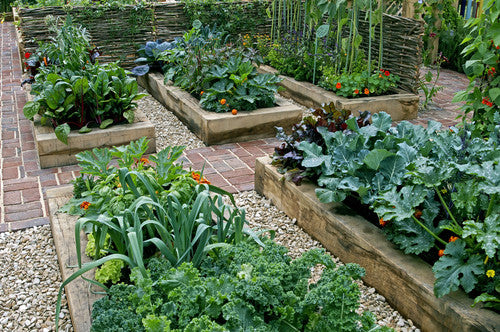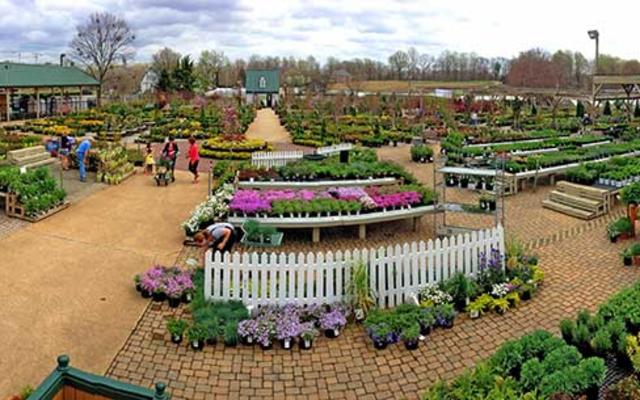Step-by-Step Guide to Homestead Gardening Effort
Discover Necessary Tips for Effective Gardening Techniques and Practices
By prioritizing important elements such as dirt health and wellness, effective sprinkling methods, and proper plant selection, garden enthusiasts can create a thriving ecological community that sustains lively growth. Several fanatics overlook essential information that can make or break their horticulture success-- discovering these ignored facets might reveal the trick to cultivating a prospering garden.
Understanding Dirt Health
Dirt health is an essential aspect of effective gardening, as it straight affects plant growth, nutrient schedule, and community equilibrium. Healthy dirt is characterized by an abundant biodiversity of microbes, raw material, and a balanced pH degree, which with each other create a setting helpful to plant advancement.
To understand soil wellness, one must consider its physical, chemical, and biological homes. The appearance and structure of soil impact its capacity to keep wetness and nutrients, while the chemical make-up determines the accessibility of crucial elements like phosphorus, potassium, and nitrogen. Normal dirt testing is essential to examine these variables, allowing gardeners to make informed decisions relating to plant foods and amendments.
Moreover, promoting biological activity within the soil is important for preserving its health and wellness. Practices such as composting, plant turning, and using cover plants can boost microbial variety, enhance nutrient biking, and minimize dirt disintegration. By focusing on dirt health and wellness, gardeners not only optimize plant growth but also add to a lasting ecosystem, ensuring that their horticulture techniques are durable and ecologically accountable in time.
Effective Sprinkling Strategies
Making sure that plants get the suitable amount of water is vital for their wellness and development, especially when coupled with a solid structure of dirt health (Homestead Gardening). Effective sprinkling methods can considerably impact plant vigor, decreasing water wastage and advertising ideal advancement
One basic technique is deep watering, which urges roots to expand deeper right into the soil, boosting drought resistance. This strategy usually entails watering less often yet in bigger quantities, allowing moisture to pass through the root area extensively. Timing is likewise crucial; early morning is the ideal time to water, as it lessens dissipation and enables vegetation to completely dry throughout the day, lowering disease dangers.
In addition, employing compost can aid keep dirt dampness and regulate temperature, more assisting efficient watering techniques. Utilizing a drip irrigation system can likewise give targeted moisture directly to the roots, making sure that water gets to where it's most needed while conserving resources.
Checking rainfall and soil moisture levels can assist changes in your watering timetable, ensuring plants get constant hydration without over-saturation. By taking on these efficient sprinkling methods, garden enthusiasts can cultivate a thriving environment for their plants to thrive.
Plant Choice and Placement
Exactly how can the best plant selection and strategic positioning change a garden into a flourishing ecological community? When picking plants, think about elements such as climate, dirt kind, and sunlight direct exposure. Homestead Gardening.
Strategic positioning includes arranging plants according to their development routines and requirements. Taller plants should be placed at the back of borders to avoid shielding shorter plants. In addition, grouping plants with similar water and light needs can improve their development and minimize competition for sources.
Integrating a diversity of plants not just adds visual appeal yet likewise promotes biodiversity, drawing in helpful insects and pollinators. Take into consideration the seasonal modifications in your garden; choose a mix of perennials, evergreens, and annuals to make certain year-round rate of interest.
Last but not least, keep in mind to assess the fully grown size of plants before growing to avoid congestion and guarantee adequate air flow. Thoughtful plant selection and critical placement develop a harmonious setting, enabling your yard to flourish while lessening obstacles.
Parasite and Illness Monitoring
Efficient insect and illness management is vital for keeping a healthy and balanced garden environment - Homestead Gardening. An aggressive approach, integrating social, organic, and chemical strategies, can dramatically reduce the impact of bugs and conditions on your plants

Organic controls, such as presenting beneficial insects like ladybugs or aggressive mites, can keep insect populaces in check without damaging the setting. In addition, keeping plant wellness with appropriate watering, fertilization, and pruning will reinforce their resilience against conditions.
When treatment is needed, decide for targeted chemical therapies, making sure to comply with application guidelines to minimize harm to non-target microorganisms. Constantly prioritize sustainable practices, as they advertise long-lasting garden health and eco-friendly equilibrium. By integrating these techniques, explanation gardeners can properly take care of diseases and parasites, making sure flourishing plants and a productive yard.

Seasonal Maintenance Practices
In spring, emphasis on soil prep work by testing pH degrees and adding necessary changes. Routinely evaluate emerging plants for parasites and illness.
As summer techniques, ensure appropriate irrigation while checking for indications of stress and anxiety or illness. Trim back overgrown plants to motivate air circulation and minimize moisture around foliage. This method not just enhances plant health and wellness yet likewise advertises blooming and fruiting.
With the arrival of autumn, it's time to get ready for winter months. Tidy up dropped leaves and particles to prevent bug problems, and consider planting cover plants to improve soil health and wellness. This period my latest blog post is additionally perfect for splitting perennials and growing spring-flowering light bulbs.
Conclusion
Effective gardening joints on the assimilation of audio methods in soil health, watering, plant selection, parasite monitoring, and seasonal upkeep. By prioritizing soil screening and microbial variety, utilizing efficient watering strategies, and picking proper plants, garden enthusiasts can create thriving ecosystems.
By focusing on necessary aspects such as soil wellness, efficient watering approaches, and proper plant choice, gardeners can develop a successful community that sustains lively growth. By prioritizing soil health and wellness, gardeners not just enhance plant development however also add to a sustainable ecological community, making sure that their gardening techniques are ecologically liable and durable over time.
Taller plants must be positioned at the back of boundaries to prevent shielding much shorter plants. Clean up dropped leaves and debris to stop pest redirected here invasions, and consider planting cover plants to enrich dirt health.Successful gardening joints on the integration of sound techniques in soil health and wellness, watering, plant option, insect monitoring, and seasonal maintenance.